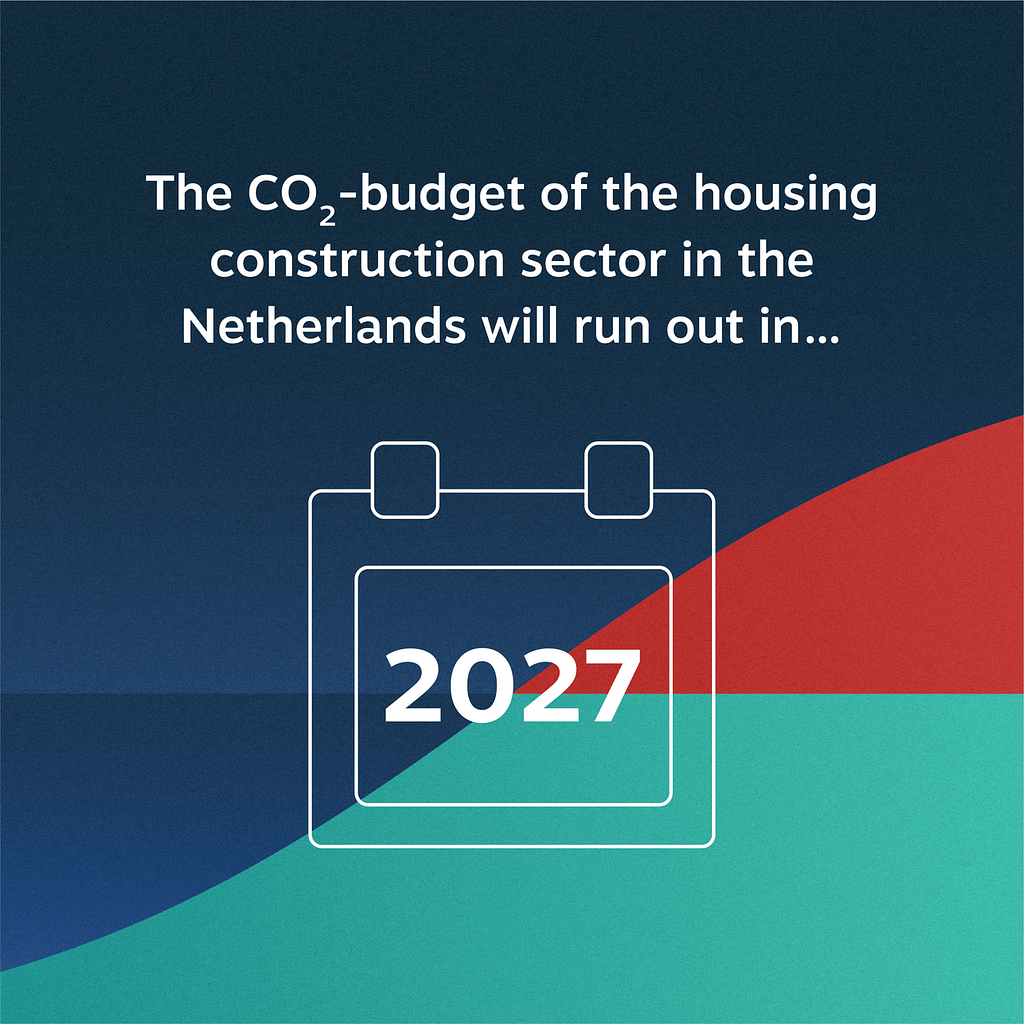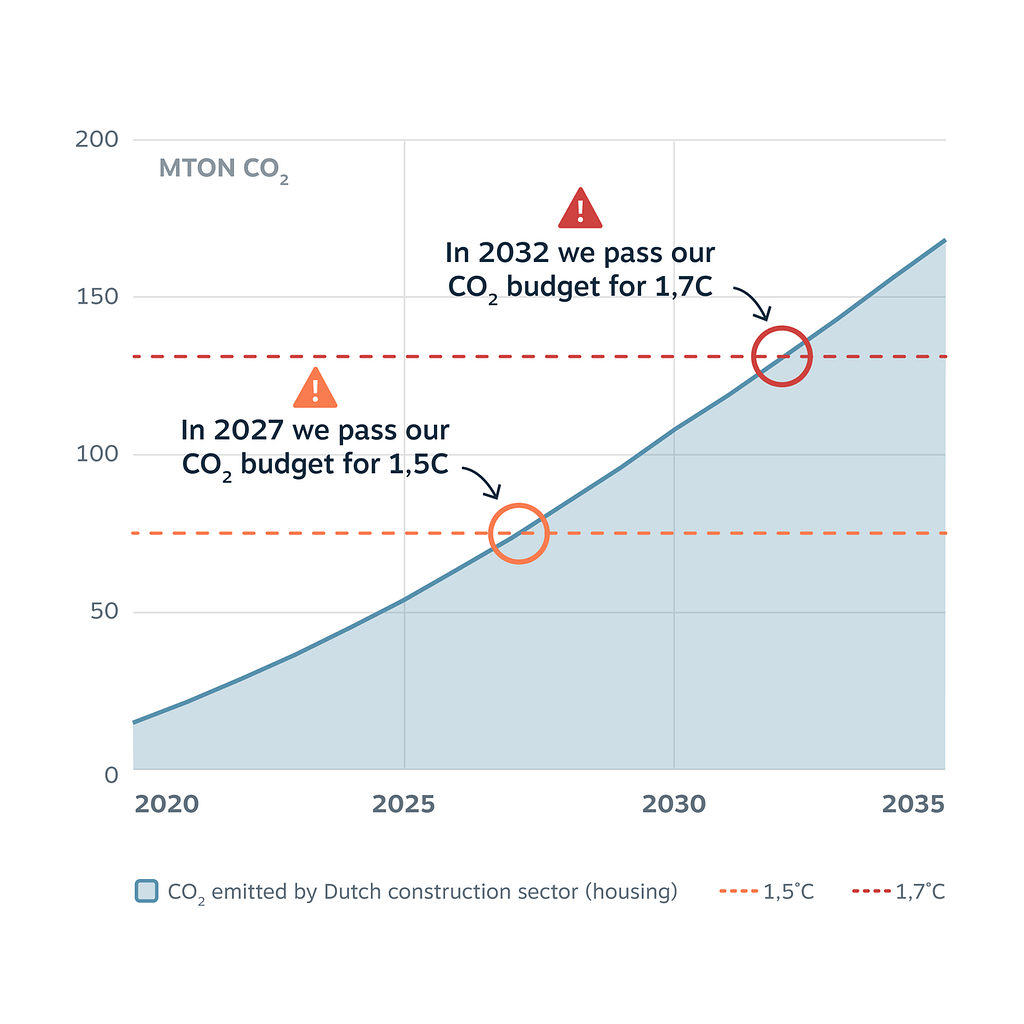How can the Netherlands build hundreds of thousands of new homes while also reducing its environmental impact? We published six strategies that show how to reduce both CO2 emissions and the use of raw materials.
To alleviate housing shortages, the Netherlands aims to build 100,000 new homes each year through 2030.
But the country has the same deadline for meeting ambitious climate targets: reducing emissions of CO2 by 55% and nitrogen by 50%, and consuming 50% less primary materials.
Is it possible to meet the housing demand without exceeding our planetary boundaries?
Our team at Metabolic partnered with Copper8, NIBE, and Alba Concepts to explore scenarios where both goals can be achieved simultaneously. We proposed six strategies that, when combined, could reduce total CO2 emissions from construction by up to 33% and the use of raw materials by 40%.
“The only way we can meet the Dutch climate goals is by looking at the building sector through the lens of the materials it uses and the demands it creates on planetary resources,” said Nico Schouten, who leads Metabolic’s Built Environment team.
Shifting how we design and construct housing requires efforts from everyone involved in the construction industry: The national government can tighten construction legislation and set requirements for co-financing housing construction. Municipalities can better direct the use of existing buildings and encourage market parties to sell land. Institutional investors can finance from a long-term perspective.
To limit global warming to 1.5 °C, there is a maximum amount of CO2 that may still be emitted worldwide. This so-called ‘CO2 budget’ is a precondition to keep our Earth healthy, safe, and livable for human activity. But the Dutch construction sector has already almost used up its CO2 budget, and will exceed it in 2027 even before accounting for new construction. If warming rises to 1.7C, the budget will still be used up already in 2032. That’s only a few extra years.


In a business-as-usual scenario, building the planned amount of housing will require 104 Mtonnes of materials, with reinforced concrete accounting for the largest share, both in terms of mass (67%) and CO2 emissions (45%). Stone materials (such as bricks and ceramics) follow, with 9% of the mass and 15% of the CO2 emissions.
The type of housing we build also affects the degree of impact. Per square meter, ground-level homes, especially terraced houses, score well on both material consumption and CO2 emissions. Apartments clearly score well, while the impact of detached houses is particularly large due to their large floor space.
We explored six strategies that would help to reduce materials and CO2 emissions:

Better use of the existing housing stock would create 50,000 homes without structural interventions. (This is labeled strategy “0” since it does not necessarily require work from the construction sector.)

Topping up and transforming existing buildings would contribute around 100,000 homes. This means converting office space into residences, and adding additional stories on top of low buildings, saving concrete, steel, and foundation materials.

Building smaller, with a shift from ground-level homes to apartments, and all homes being built about 10% smaller.

High-quality reuse, with the share of reused parts and materials increasing to 9.5%. Though urban mining and materials passports are obvious ways to reduce material consumption, they are not being used widely.

Biobased construction, with the proportion of biobased homes increasing to 50% (ground-based) and 30% (stacked construction). There is a lot of interest in using materials such as wood and bamboo, and our research found that there is adequate supply for housing.

Intensive industrialization, with residential industrial production growing to 50%. Building pieces of houses in factories and transporting them to construction sites is more sustainable.
“Individually, the strategies each only make a small impact,” said Sybren Bosch, senior consultant at Copper8. “When we do it all at once, the impact is much greater and we can stay close to the limits of the planet.”
The Transformation and Building Smaller strategies deliver the greatest gains in terms of CO2 emissions (10% and 8%) and environmental impact (both approximately 8%).
Combined, these scenarios reduce the total CO2 by 33%, material consumption by 38% and environmental impact by 29%. Yet this is still insufficient to realize the circular ambitions in the construction industry, so we must also focus on making better use of the existing housing stock.
This scenario also saves €17.7 billion, about 10.5% of the total costs of construction. Investing in these circular strategies now reduces future financial risks.
Find out more in the report, “Woningbouw binnen planetaire grenzen” (Housing within planetary boundaries), which was presented during an event in Amsterdam.





